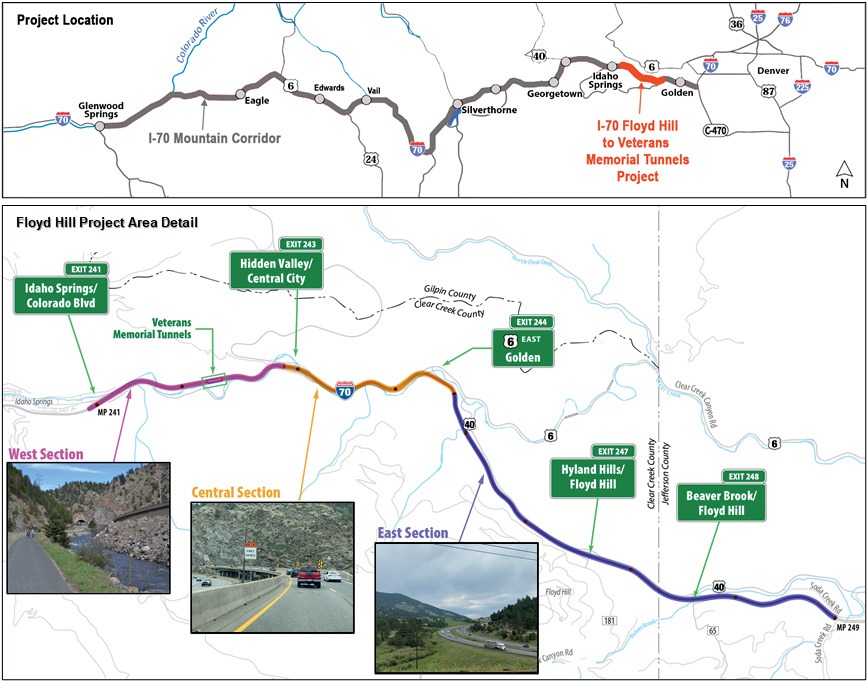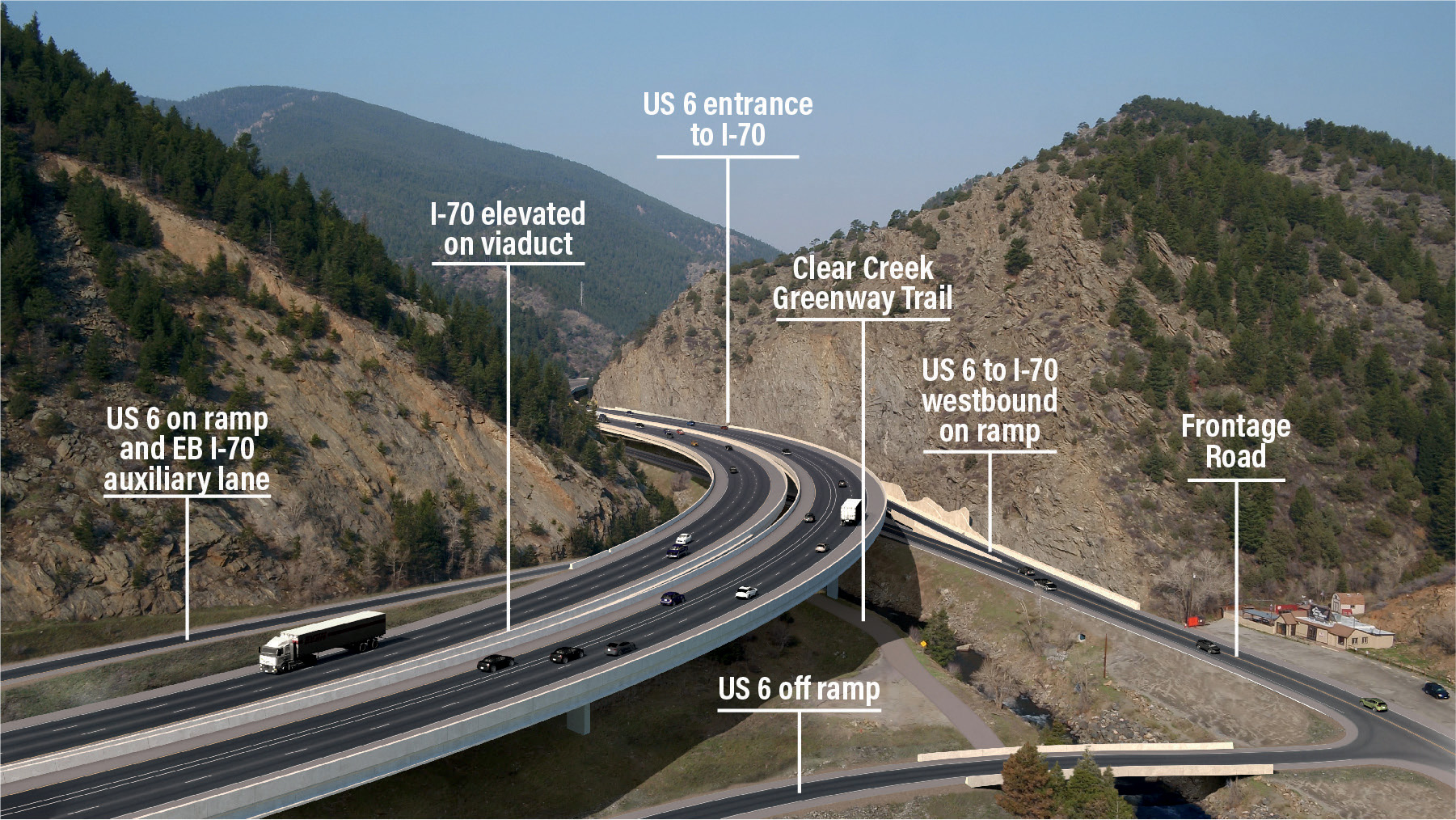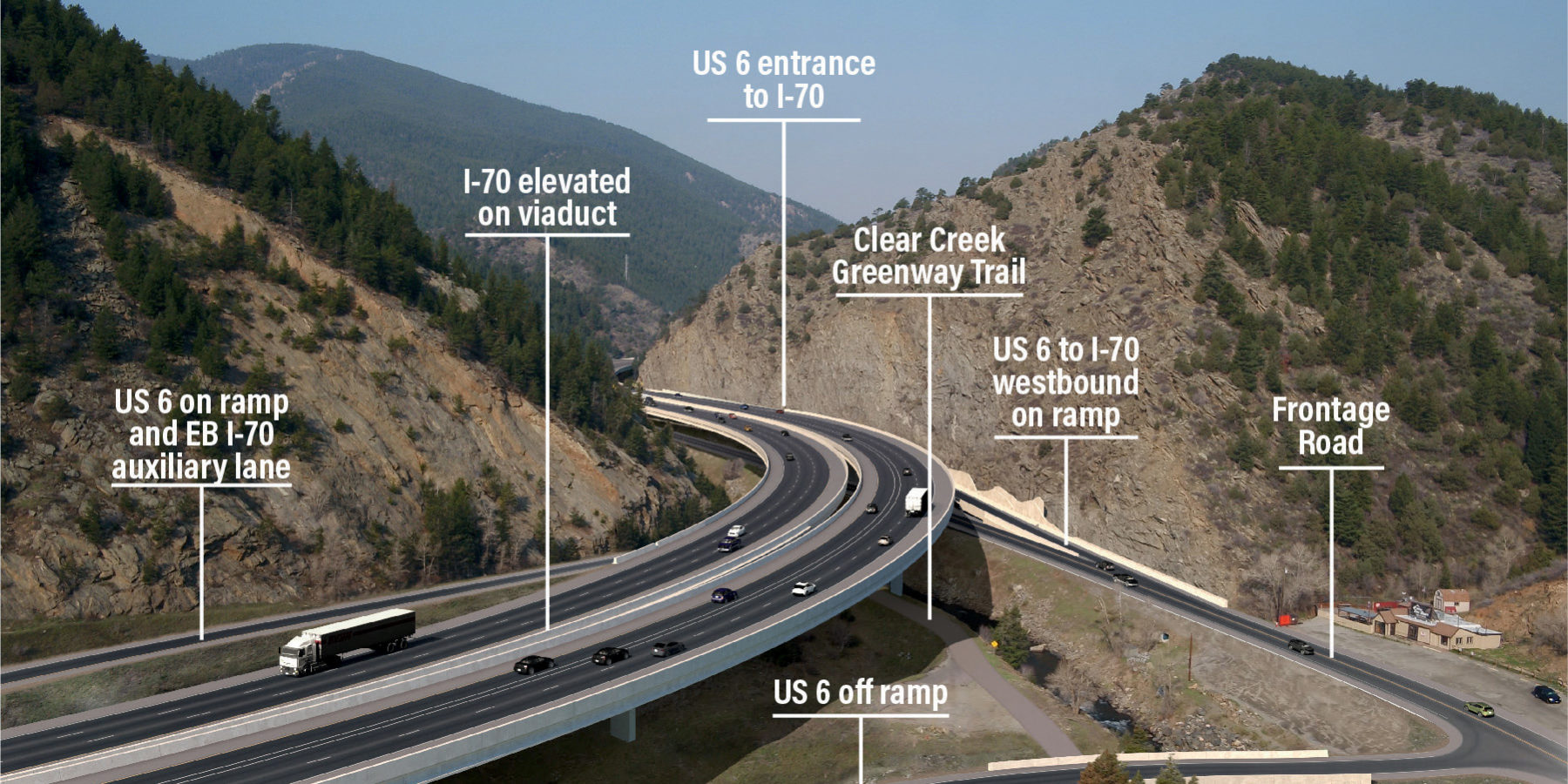Background
The following case study examines a transportation project that uses the Context Sensitive Solutions (CSS) and Design (CSD) processes to integrate resilience to existing hazards through project design. CSS/CSD distinguishes itself as a transportation planning and design process that prioritizes the broader physical, environmental, and societal context within which a project is conceptualized, planned, designed, constructed, operated, and maintained. CSS/CSD promotes collaboration among a diverse range of stakeholders to ensure long-term project resilience and success. CSS/CSD principles are often used interchangeably. They can also be achieved through processes referred to as Value Sensitive Design or Flexible Design. The case study identifies key benefits of incorporating CSS/CSD into resilient transportation improvement projects.1
Resilience is defined by AASHTO as “the ability to prepare and plan for, absorb, recover from, or more successfully adapt to adverse events.” Resilient transportation improvement projects can reduce project risk to climate change as well as other hazards, such as, earthquakes, landslides, or terrorism. These projects can also mitigate or avoid associated consequences such as traffic bottlenecks in an evacuation.
By using CSS/CSD, project teams can ensure that projects focused on resilience are better equipped to withstand future impacts while integrating into the current context of the site. Preserving site context means a transportation project will meet community needs in a way that reflects community values and enhances the surrounding built and natural environment. The project\ case study below summarizes transportation improvements that are being made to enhance the resilience of a mountain corridor in Colorado.
Context Sensitive Solutions/Design
The Context Sensitive Solutions (CSS) process is a collaborative, interdisciplinary, and holistic approach to the development of transportation projects. The CSS process involves all stakeholders, including community members, elected officials, interest groups, and affected local, state, and federal agencies. The CSS process values equally the needs of agency and community, considering all trade-offs in decision-making.
Context Sensitive Design (CSD) is design process that not only considers physical aspects or standard specifications of a transportation facility, but also the economic, social, and environmental resources in the community being served by that facility.
Existing Conditions and Hazards
The Colorado DOT (CDOT) is currently implementing a series of improvements to I-70 westbound from Floyd Hill to the Veterans Memorial Tunnels on the eastern edge of Idaho Springs, Colorado. This stretch of I-70, approximately seven miles, experiences significant congestion due to the merging of several lanes and an intense sun glare off the steep road-grade which slows traffic.
In addition, CDOT’s I-70 Corridor Risk and Resilience Pilot identified Floyd Hill as the section of the corridor at highest risk of damage and disruption from landslides. These types of impacts are not new to the I-70 Mountain Corridor. As of August 2021, mudslides closed Glenwood Canyon on I-70 for two weeks due to a mudslide that “heavily damaged” this stretch of highway.2 This section of the highway was at-risk for slides after the area experienced the Grizzly Creek Fire which started in August 2020.3 Adverse weather conditions including severe winter weather and landslide and rockfall events are also known damage the interstate in the Floyd Hill area and present an additional traffic safety concern. Travelers and emergency response vehicles often experience significant delays up to a few hours traversing this segment of the interstate. Existing landslide susceptibility and adverse weather events currently threaten this section of I-70 and these events could be exacerbated over time with climate change.
CSS/CSD Process
CDOT has defined the Floyd Hill area of the interstate as part of the I-70 Mountain Corridor. As with all of the Mountain Corridor projects, CDOT follows a “6-Step” CSS/CSD process (see Figure 1), which involves assigning a team of stakeholders to work closely with the project team to identify core project goals and desired outcomes, establishing team roles and endorsing the CSS/CSD process, developing project evaluation criteria with affected parties, reviewing and evaluating alternatives with stakeholders and the public, and providing final documentation and debriefing on the process.4 This process is a starting point to guide effective, collaborative decision making for all projects on the I-70 Mountain Corridor and was applied for the I-70 Floyd Hill to Veterans Memorial Tunnels Project.

Figure 1: CDOT I-70 Mountain Corridor 6-Step Process
The project prioritized cooperation among multidisciplinary stakeholders with different perspectives. Through the CSS/CSD process, a Project Leadership Team (PLT) was established to guide all phases of the 6-Step process and the Floyd Hill project. The PLT also assembled a Technical Team (TT) to review proposed transportation improvements and project alternatives and Issue Task Forces (ITF), who are involved in the process for specific subjects such as wildlife, water quality, or any other issue requiring specific expertise. Stakeholders involved include, but are not limited to, various cities and counties along the corridor, Colorado Parks and Wildlife, Federal Highway Administration, law enforcement and emergency services, US Forest Service, and Colorado Motor Carriers Association. The goal of this regular collaboration is to build consensus around the proposed improvements and final decisions.

Figure 2: I-70 Floyd Hill to Veterans Memorial Tunnels Project Area
Interstate Improvements and Project Resiliency
Planned improvements to I-70 include “adding a third westbound travel lane on I-70, constructing a missing frontage road connection, adding an eastbound auxiliary lane to the uphill section of Floyd Hill, improving interchanges and intersections, improving design speeds and stopping sight distance on horizontal curves, improving the Clear Creek Greenway (multimodal trail), and implementing environmental mitigation for wildlife connectivity, air and water quality, stream conditions, and recreation.”5 The preferred project alternative involves construction of a viaduct, the “Canyon Viaduct,” through Clear Creek Canyon, elevating the east and westbound lanes of I-70. This is critical to eliminating landslide concerns by moving the existing roadway from the landslide-prone area. The viaduct also reduces risk of flooding, forest fires, and rockslide impacts by elevating the roadway.

Figure 3: Simulation of the Canyon Viaduct Above Clear Creek Canyon
The construction of a new frontage road between the US 6 interchange and the Hidden Valley/Central City interchanges will provide route redundancy in the area in case of emergency. The added auxiliary lane on I-70 can provide additional capacity for emergency vehicles to move quicker in the corridor if general purpose lanes are congested. Improvements to the Clear Creek Greenway multimodal trail can also provide an alternate route for emergency personnel, if needed, and of course provides recreational opportunities for the public.
Improvements to US 40 are proposed to alleviate the congestion on the frontage road when I-70 is temporarily closed. This is needed as sun glare has also been a major issue during early morning travel times going eastbound on I-70, requiring highway closures and traffic to be re-routed to US 6 and US 40.
The preferred Canyon Viaduct alternative reduces animal/vehicle conflicts and improves wildlife habitat connectivity. Improved wildlife crossings are proposed in selected locations to facilitate safer wildlife movement across I-70. As part of the CSS/CSD process, CDOT worked with wildlife stakeholder subgroups and landowners to identify optimal locations for the wildlife crossings by observing existing migrations patterns. Current land ownership was considered to ensure installation at the most optimal and long-term locations. Incorporating CSS/CSD concepts into the Floyd Hill project improves long-term benefits by taking into consideration the larger contexts of environmental and community concerns, responding to existing site hazards like landslides, and applying valuable local ecological knowledge and expertise to focus decision-making.
Benefits of Incorporating CSS/CSD into Resilience Projects
The I-70 Floyd Hill project demonstrates how CSS/CSD principles and concepts can be incorporated seamlessly into projects focused on resilience. CDOT staff noted the successes of applying the CSS/CSD process to a project, while also evaluating risks from hazards such as landslides and associated consequences like roadway closures and delays. By creating a space for all community stakeholders to weigh in, CDOT was able to identify the full range of challenges on the corridor and create design alternatives that address these issues (e.g. limited route redundancy). Keeping stakeholders involved throughout ensures that project alternatives meet the needs of all travelers as well as local wildlife.
A unique aspect of applying CSS/CSD principles to resilience projects is that it allows for consideration of both existing and future site context. While CSS/CSD is typically focused on understanding the existing site conditions and needs, incorporating CSS/CSD into resilience projects, especially those oriented around adapting to climate change, creates an opportunity to think about what the future site context may be. Project teams will need to think about how risks may change over time and how community needs will evolve. As an example, users of a roadway may identify the need for more sidewalks and bike lanes. While considering this need, project teams may also evaluate how rising temperatures could affect pedestrians and bicyclists. An adaptation strategy could be designed to provide shading in the form of structural overhangs or tree canopy to ensure that the sidewalks and bike lanes are useable and safe well into the future.
The overlap of CSS/CSD and resilience presents an area that is still being explored and where there is significant opportunity to address project challenges for the present and future.

